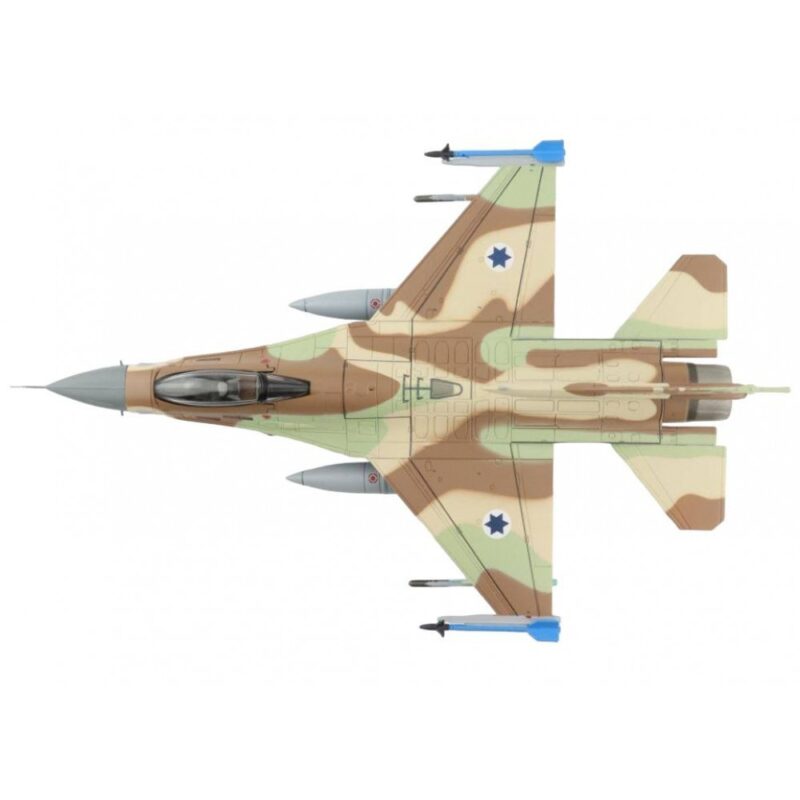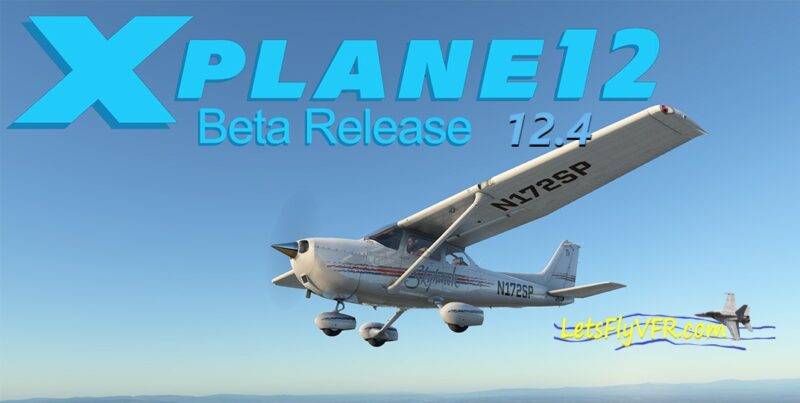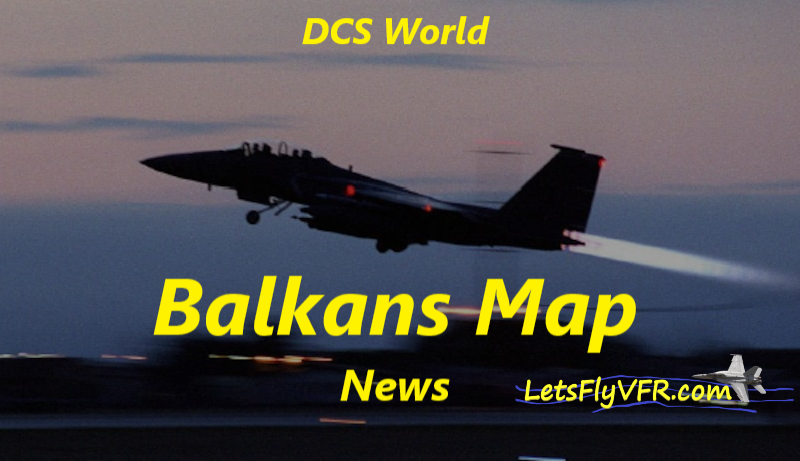The Truth in Achieving DCS Dogfighting Turn Circle Entry Perfection!
What is a Turn Circle Entry.
The Turn Circle Entry in DCS World if flown well in any fighter from the F-5 Tiger II to Viper and Hornet allows us to position our jet in the most ideal position generally to kill our adversary. We want to get in the best position to employ missiles or guns as fast as possible. Being behind the enemy jet is the safest place to do this generally! With newest highly maneuverable missiles available it’s not as cut and dried as it once was because if you fly past an enemy, they can now use the latest generation helmet mounted sights to target you over their shoulders and still kill you!
Turning to be on their six fast is what getting a great Turn Circle Entry is all about! We will discuss how to do it below but understand the longer you’re in a turning fight with an adversary allows his wingman to come to his aid and kill you while your focused on the leader! Be fast, Be ruthless and survive! Long drawn-out turning battles will reduce your chance of survival exponentially!
Types of Dogfight Geometry – 1 and 2 Circle Fights.

The way it works when two or more fighter aircraft merge or initially pass each greatly determines much of how the fight will progress and more often how it will end! When two fighters pass, they tend to choose a One Circle Fight which is a fight to make the smallest circle faster in the sky.
This is always done nose to nose in an attempt to get weapons pointing at the target fast but also preferred by aircraft that have amazing low speed handling and great AOA (Angle of Attack) qualities. These aircraft are the Mirage 2000 and F-18 Hornet plus the Mig-29 to name a few.
The other option is a Two Circle Fight or nose that is a nose to tail fight. Think of one dog chasing another’s tail around the yard! Yeah, whoever can get around the circle fastest will win the battle! It’s all about how many degrees per second your jets nose translates through the imaginary circle.
The best real-world fighter for years is the F-16 Viper but Its adversary, The Mig-29 can also rate very well but DCS World isn’t quite as accurate as we would like, and the Mirage 2000 and F-18 Hornet can out rate the Viper ATM. So now we understand the basic options to dogfight we can talk about circle entry.
Turn Circle Entry if done well will put us on the enemy jets tail in the same diameter circle. If our turn circles are offset, we will trace offset circles in the air meaning now and again we will pass head-to-head at the 180 degree point in our circle. Not ideal in a 2-circle fight!
BFM. Basic Fighter Maneuvers.
The Air Force manuals on dogfighting make a big deal of the dogfighting and getting the “Turn Circle Entry” correct. This pretty important aspect of Basic fighter maneuvers so what’s the big deal? So, ensuring your initial turn will place you in a position to get behind your opponent fast and in his rear quarter is what this is about.
- Joystick / HOTAS – AMAZON.com
- Rudder Pedals – AMAZON.com
- Throttle Quadrant – AMAZON.com
- Gaming Chair – AMAZON.com
- VR Headset – AMAZON.com
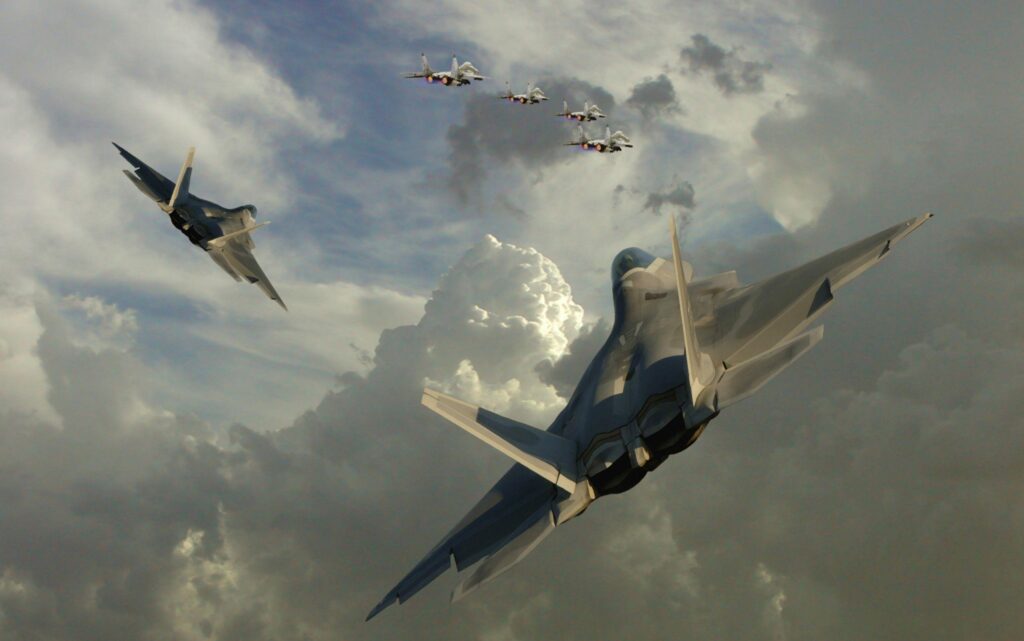
How get the Turn Circle Entry Correct – Visual Reference 30 degrees.
So, how do I know when to start my Turn Circle Entry. First you need to understand Line of Sight Rearward or LOSR. As an aircraft approaches you from the forward quarter it initially will move slowly across your canopy. The movement of the adversary is what we use to initiate the T.C.E correctly. Seeing if the bandit is moving forward in relation to your aircraft it’s a low LOSR and rapidly moving rearward is a fast LOSR.
Often the USAF manual describes the point as where the Bandit starts to rapidly move backwards along your canopy.
- The enemy aircraft approaches from ahead towards your aircraft. Its initial movement across your canopy will be slow! The movement will quickly increase in speed to a point it becomes very fast. The trick and why it takes time to get the timing of your turn correctly is choosing the time the enemy jet rapidly accelerates rearward on your canopy as the cue to make a max performance turn! This will put you in the same circle and in a position to chase down your opponent.
- Another fighter real world pilot guide is to fly at your corner airspeed and start your turn in plane and in relation to your bandit as the bandit gets to 30 degrees from your centerline view. This is relevant in any direction but in the end, you have to be in plane with your target bandit. Please understand these 30 degrees guide angle is workable no matter if the bandit is in front of you turning or flying across your path.
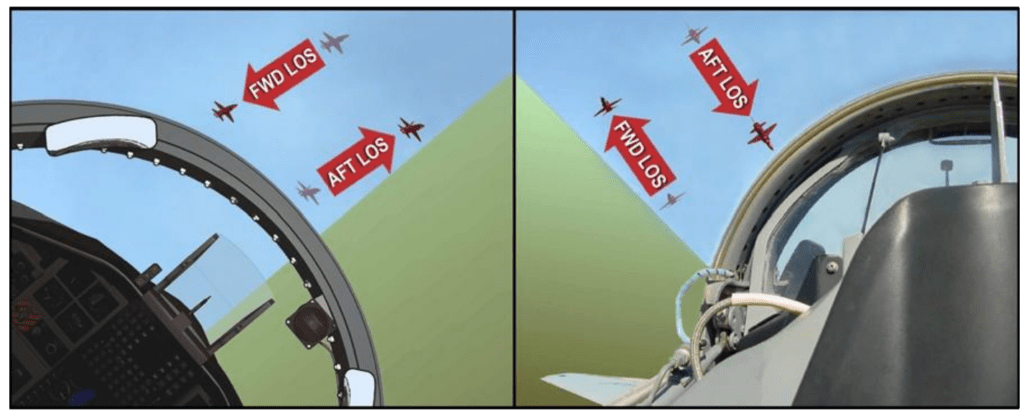
DCS Editor Makes Training Easier.
So, we have two visual options to practice to get our T.C.E maneuver correct. I recommend you set up a scenario in DCS World Editor so you can practice the scenario as many times as you need to get it perfect. Once you do it be a game changer? For some it may take a while to get the timing correct regularly. It seems real world fighter pilots do sometimes struggle to get it correct so practice will be your friend.
I am practicing it myself as I write and I’m getting more and more accurate with my Turn Circle Entry. I’m ending up on the six o’clock of my target more often than not and forcing mistakes as they panic it seems, appearing on an opponent’s tail much faster than they expected causes them to make many more mistakes than usual! This is allowing me to get much faster kills than was previously possible for me to achieve. These are veteran AI so I need to get some testing done online and see if I can be as consistent.
Assessment Window and why You Need to Understand it.
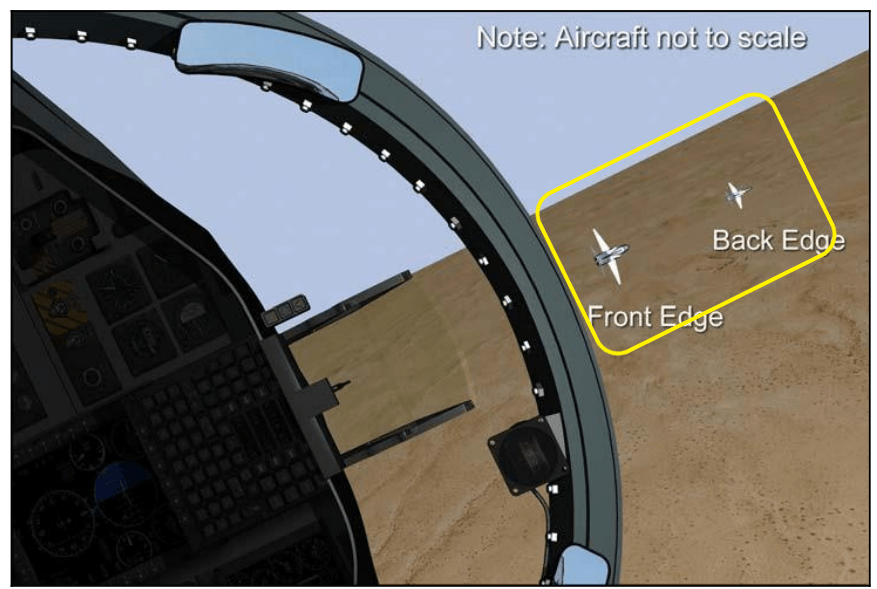
In the picture above you can see an ideal position with the bandit inside the “Assessment Window” which is about 2 fist heights above the canopy bow. You should hold an enemy here till you feel its right to pull them into the HUD for a kill. Holding an enemy here ensures you don’t pull to much AOA and drain your aircrafts vital energy reserves. Getting an enemy bandit here is absolute gold! Now your aircraft controls the fight and is in pretty much complete control short of the defending bandit doing something drastic which is likely to happen soon if you don’t achieve the victory. Time is your enemy as always!
As previously mentioned, the assessment window allows you to control your closure without pulling the bandit into the HUD/Gunsight. Keeping the Bandit in your HUD is a massive mistake because it requires much more energy from your aircraft costing you speed. Doing so will cost you speed, energy and likely the victory. Hold your bandit in the control zone till you’re ready to fire a missile or fire you’re the guns at the target. Control the fight but as we have been discussing you have to get everything correct to get to this point!
Also, in this example above, the pilot is in the WEZ Weapons Employment Zone also known as the “WEZ”
- Latest CPU’s Available Now – Amazon.com
- Get a NEW GPU Best Performance – AMAZON.com
- Upgrade RAM Here today – AMAZON.com
- Prebuilt PC Options – AMAZON.com
Real World Example F-16 Vs F-16 Training Mission.
Hazzard Lee is a real-world fighter pilot currently flying the F-35 Joint Strike Fighter for the USAF. In the video above he is flying 1v1 against another jet and I thought it valid to include the video as he makes mention of the TSE in his commentary. At least you know I’m not just making all this stuff up!
VISIT HAZARD LEE YouTube Channel Here
Conclusion.
I hope this short insight into the Turn Circle Entry (TSE) helps you win more 1v1 battles against your friends, online adversaries and brings you more enjoyment. BFM is so complex with many facets to understand and bring together as a single skill set. Practice and understanding TCE as well as Returns and how to use them is an essential BFM skill. With practice and understanding you should be a more successful fighter pilot in DCS World! Thanks for visiting www.LetsFlyVFR.com
AUTHOR

Brendon McAliece (Aka Gunnie) is a military veteran with 23 years working on Jet Fighters, their weapons systems and ejection seat/module systems as well as munitions and R&D. Involved with flight simulation since the 1980s, he has flown all the major flight simulators over the years.
He is an Australian expat who has lived in Malaysia, UK, Saudi Arabia and more recently Thailand. He is a multi-lingual blogger who loves to share his life experiences here on LetsFlyVFR.com and DreamingGuitar.com, with his lifestyle and Travel experiences Blog plus his Dreaming Coffee website.
Learn More @
DreamingGuitar.com – DreamingCoffee.com – LetsFlyVFR.com
( HOME – BLOG – SHOP – ABOUT )
As an Amazon affiliate I may benefit from qualifying sales.
